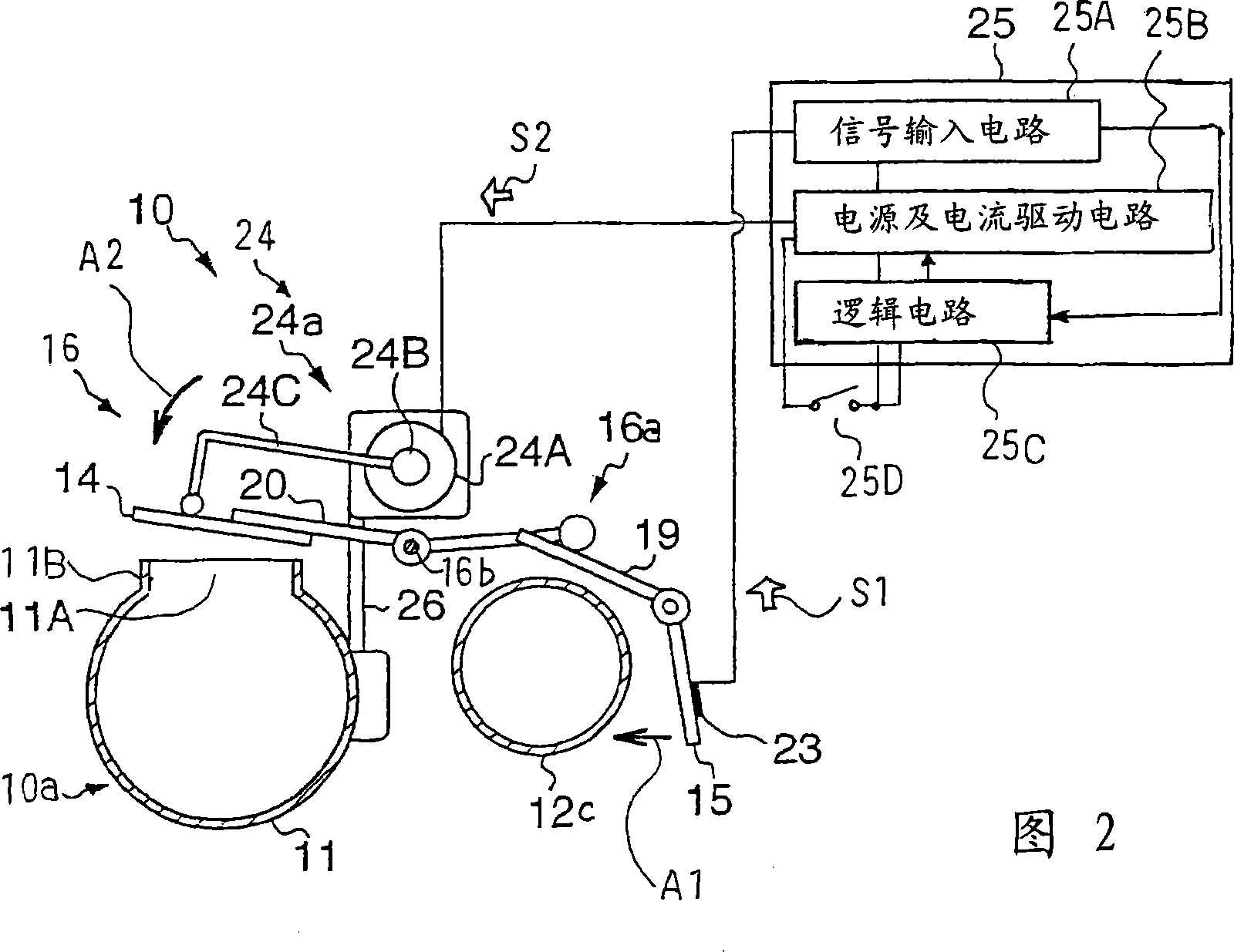Wind instrument having pads for closing tone holes with mechanical assistance and supporting system used therein
A wind instrument, sound hole technology, applied in the field of assisting systems
- Summary
- Abstract
- Description
- Claims
- Application Information
AI Technical Summary
Problems solved by technology
Method used
Image
Examples
no. 1 approach
[0048] Referring initially to Figures 1 and 2 of the drawings, a wind instrument embodying the present invention generally includes a saxophone 10 and an assist system 24 . A live player plays a piece of music on the saxophone 10 with or without the assistance system 24 . When a live player plays a piece of music on the saxophone 10 without the assistance system 24 at all, he or she blows air into the saxophone 10, causing the air column to vibrate, and changing the length of the air column by fingering, thereby changing the pitch. The real player applies force to the saxophone 10 to change the length of the air column by himself, and the assisting system 10 does not help the real player to change the length of the air column.
[0049] On the other hand, when a live player plays a piece of music on the saxophone 10 by means of the assist system 24, he or she also blows into the saxophone and changes the pitch by fingering. When the real player changes the pitch, not only the ...
no. 2 approach
[0073] Turning to Figures 6A and 6B of the accompanying drawings, another wind instrument embodying the present invention also mainly includes an acoustic wind instrument 10A such as a saxophone and an assisting system 24A. The acoustic wind instrument 10A is similar to the saxophone 10 except for the touch buttons / keys 15A, and the other components of the acoustic wind instrument 10A are indicated by reference numerals representing the corresponding components of the saxophone 10, which will not be described in detail for brevity. illustrate. Each touch button / key 15A is formed with a small protrusion 15a having a circular head. Small protrusion 15a is described in detail below in connection with the sensors incorporated into assisting system 24A.
[0074] Assist system 24A is similar to assist system 24 except for the sensors. For this reason, the description will focus on the sensors and, to avoid repetition, further descriptions of the other system elements will not be g...
no. 3 approach
[0079] Turning to Figures 7A and 7B of the accompanying drawings, yet another wind instrument embodying the present invention also mainly includes an acoustic wind instrument 10B and an assisting system 24B. The acoustic wind instrument 10B is similar to the saxophone 10, and the components of the acoustic wind instrument 10B are denoted by reference numerals representing the corresponding components of the saxophone 10, which will not be described in detail for the sake of brevity.
[0080] The assistance system 24B is similar to the assistance system 24 except for the sensor and control unit 25BB. For this reason, the description will focus on the sensor and control unit 25BB and, to avoid repetition, no further description of the other system elements follows.
[0081] Each sensor is associated with one of the touch buttons / keys 15B and consists of a combination of a magnetic scale 32A and a magnetic sensor head 32B. The magnetic scale 32A is adhered to the front end porti...
PUM
 Login to View More
Login to View More Abstract
Description
Claims
Application Information
 Login to View More
Login to View More - R&D
- Intellectual Property
- Life Sciences
- Materials
- Tech Scout
- Unparalleled Data Quality
- Higher Quality Content
- 60% Fewer Hallucinations
Browse by: Latest US Patents, China's latest patents, Technical Efficacy Thesaurus, Application Domain, Technology Topic, Popular Technical Reports.
© 2025 PatSnap. All rights reserved.Legal|Privacy policy|Modern Slavery Act Transparency Statement|Sitemap|About US| Contact US: help@patsnap.com



